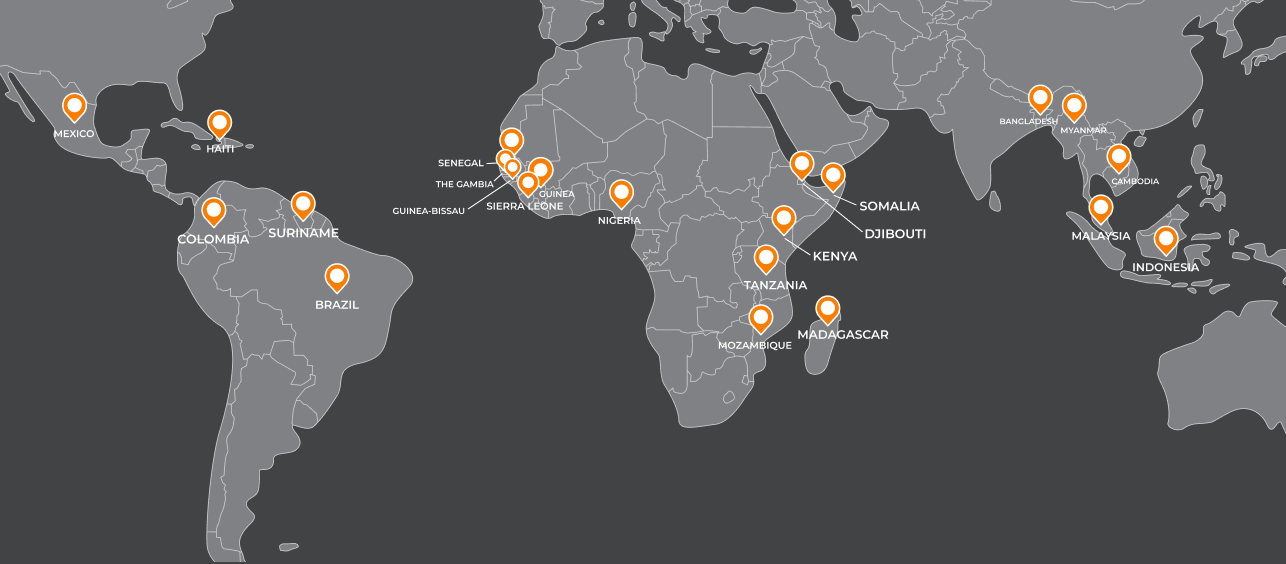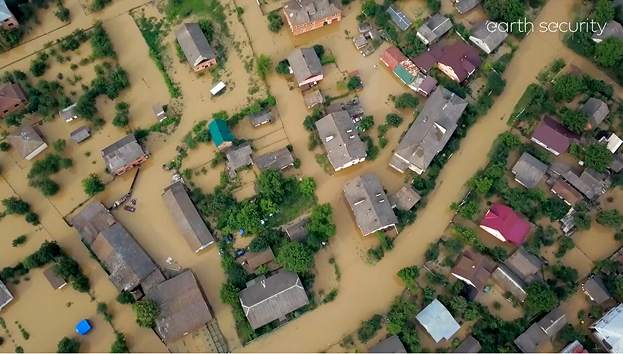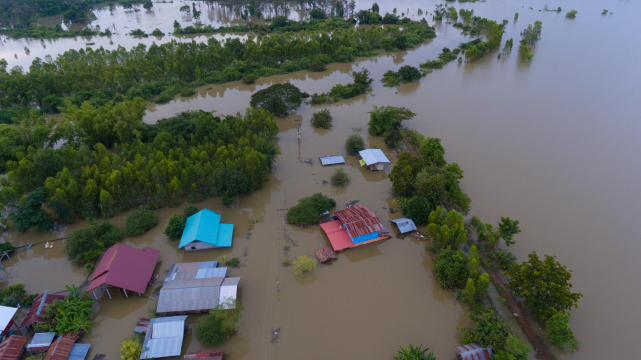This article was originally published by Euromoney.
Lucy Fitzgeorge-Parker, 29 March 2021.
Biodiversity loss now competes with climate change as the principal challenge for sustainable finance. What does it actually mean for banks and asset managers and what can the private sector do to restore the balance of nature?

Nature is in crisis. That is the message coming through loud and clear from scientists and activists. Over the past two years, a series of seminal reports by non-governmental organizations and intergovernmental bodies have painted an apocalyptic picture of biodiversity loss across the globe.
Global populations of wild species have fallen by nearly two thirds since 1970, mainly due to changes in land use, overexploitation of resources, climate change and pollution. Nearly a quarter of all land globally is now considered degraded.
As a result, the world is currently losing species at up to 1,000 times the natural rate. Around 25% of animal and plant groups are under threat, meaning a further one million species are at risk of extinction.
That in turn poses an existential threat to the economies and populations of countries around the world. The World Economic Forum calculates that more than half of global GDP is highly or moderately dependent on nature. Pollinator loss alone could put nearly $580 billion of annual global crop output at risk.
“Biodiversity has gone very quickly from being a niche topic to a broad recognition that it is hugely important”
Marisa Drew, Credite Suisse
In September, the World Wildlife Fund warned that 20 countries – including Spain, Belgium, Australia and India – are approaching a biodiversity “tipping point” and could see essential services such as food provision disrupted in the near future.
Unsurprisingly, nature has also risen rapidly up the agenda for policymakers. The European Union’s new biodiversity strategy, announced in May 2020, sets targets for 2030 that include increasing organic farming to 25% of all land, reducing the use of pesticides by 50% and planting three billion trees.
Four months later, at the first UN summit on biodiversity, the heads of state of 64 countries signed the Leaders’ Pledge for Nature, a commitment to reverse nature loss by 2030. A further 18 have joined since then.
In January, at the virtual One Planet Summit hosted by France, president Emmanuel Macron announced that 53 countries had committed to protecting at least 30% of their land and sea by 2030.
“Biodiversity has gone very quickly from being a niche topic to a broad recognition that it is hugely important – that we need to do something and we need to do it fast,” says Marisa Drew, chief sustainability officer at Credit Suisse. “The next question is how do we do it.”
Increasing awareness
This urgency has spread to the financial sector. Bankers and fund managers who have spent the past 10 years getting to grips with climate change are now rushing to get up to speed on nature, spurred on by a rising awareness of the risks associated with biodiversity loss.
These include the dangers to businesses from physical factors such as declining fish stocks, poor soil health and the erosion of natural coastal defences, as well as the prospect of a tidal wave of regulation from newly biodiversity-conscious policymakers.
On the latter, Europe is leading the way. As well as its commitments under the biodiversity strategy, which are due to be finalized by the end of December, the EU is expected to introduce legislation this summer requiring companies to prove that products sold in the bloc are not linked to deforestation.
Action is also being taken at national level. In 2016 France enshrined the principles of “no net loss of biodiversity” and “polluter pays” in law, as well as adding a chapter on biodiversity offsets to the country’s Environmental Code.
The UK is also keen to position itself as a leader on nature post-Brexit. While the Conservative government has yet to propose comprehensive biodiversity legislation, it made a key contribution to the global debate with the publication in February of the Dasgupta Review on the economics of biodiversity.
Among other things, the review recommended the imposition of charges for the use of ecosystems such as oceans – a concept that came a step closer in March when UN member states agreed to include “natural capital” resources such as forests and wetlands in national economic accounting.
Other potential regulatory risks highlighted by the University of Cambridge Institute for Sustainability Leadership (CISL) in an April 2020 report on biodiversity include taxes or restrictions on nitrogen fertilizer to reduce water pollution, particularly in countries dependent on intensive agriculture.
This has already become an issue in the Netherlands, where a “nitrogen crisis” was precipitated in 2018 by a European Court of Justice ruling that the country had exceeded nitrogen emission limits set by the EU. In response, the government was forced to halt construction projects and cut speed limits on roads.
This in turn prompted the Dutch central bank to undertake an assessment of the risks posed to the country’s financial sector by biodiversity loss and measures to prevent and reverse it.
Published in June 2020, the study – the first of its kind globally – found that 36% of assets held by Dutch banks, pension funds and insurers were exposed to physical, reputational and regulatory risks associated with biodiversity. The central bank encouraged other regulators to follow suit and also urged financial institutions to do their own analysis.
Action needed
A study by Responsible Investor and Credit Suisse, published in January, suggests such action is urgently needed. Of 270 asset managers surveyed, 72% had made no assessment of their investments’ impacts on biodiversity, while more than 90% of respondents had no biodiversity-linked targets.
“We are in a situation where investment is largely blind about its impact on nature,” says Andrew Mitchell, a zoologist turned natural capital consultant and founder of tropical forest think tank Global Canopy. “We have trillions of dollars pouring around the world, but the impact it has on nature doesn’t show up in a share price anywhere.”
This has started to change over the past year. Yet despite a stream of reports from the likes of CISL, Swiss Re and Morgan Stanley on the impact of biodiversity on the financial sector, and vice versa, progress remains slow.
The main problem is that, even by environmental standards, biodiversity is a complex topic. Not only have scientists and policymakers yet to come up with an equivalent to the Paris Agreement’s target of limiting global warming to below two degrees centigrade, there is no consensus on how to measure biodiversity.
“We have trillions of dollars pouring around the world, but the impact it has on nature doesn’t show up in a share price anywhere”
Andrew Mitchell, Global Canopy
“Funds focused on energy transition have a clear objective, which is reducing tonnes of carbon dioxide emitted, but for biodiversity there is no Holy Grail metric,” says Robert-Alexandre Poujade, an environmental, social and governance (ESG) analyst at BNP Paribas Asset Management.
“You need to look at water quality, land use, species density, sustainable fishing and deforestation, among other things.” Even with climate change, where a standard metric was agreed relatively quickly, integrating it into investment decisions has been a lengthy process, says Peter van der Werf, head of engagement at Robeco.
“We’ve had years of discussions with our climate change committee on Scope 1-3 emissions, how to measure them, the best ways of expressing that when you translate it into footprint and how to come up with forward-looking indicators,” he says.
It is a sign of how recently biodiversity has moved up the agenda that Robeco, one of the sustainability leaders among European asset managers, only set up a taskforce on the topic in October.
To add to the complexity of assessing biodiversity, issues vary widely between regions and even within them. Water scarcity can be an existential threat in some places, while in others flooding is the primary problem.
“One of the main challenges in addressing biodiversity is that it can be very localized and different people can have different priorities based on the ecosystem under threat locally, which makes it hard to take a holistic view,” says Vikram Raju, head of impact investing at Morgan Stanley Investment Management AIP Private Markets.
This also means that companies’ biodiversity footprint has to be assessed at a local level. “You have to consider the impact at the level of each facility,” says Poujade. “It is not like carbon, where you can produce a sum total of emissions for a company. That adds another level of complexity.”
Under the circumstances, it is hardly surprising that reporting on biodiversity by companies is still extremely limited. According to a survey of the largest corporates in 52 countries published by KPMG in December, the only sector in which more than half of companies (51%) report on the risk of biodiversity loss to their business is mining.
For other industries seen as heavily exposed to nature loss or regulation to prevent it – forestry and paper, food and beverage, oil and gas, and chemicals – the figure ranged from 40% down to 25%. The worst performer was financial services, with just 9% of respondents reporting on biodiversity risks.
This means that, even by the standards of sustainability, there is a dearth of data on the topic. The study by Responsible Investor and Credit Suisse found that 70% of investors cited data as the biggest barrier to making investments that support biodiversity.
“We are all desperate for data,” says Michael Lewis, head of sustainable finance research at DWS Group. “We can isolate a few items that relate to biodiversity, but we don’t have anything like a full data set or a coordinated approach.”
Emerging initiatives
Traditionally, tools for measuring biodiversity impact have tended to focus on deforestation, such as CDP’s forest scoring methodology and Trase, Global Canopy’s supply chain transparency platform. Others, notably the UN’s Integrated Biodiversity Assessment Tool, provide data about threatened species, protected habitats and key global biodiversity sites.
More recently, initiatives that try to give a broader picture have started to emerge. The Dutch central bank’s work on biodiversity was based on Encore, a joint venture by Global Canopy and the UN Environment Programme Finance Initiative (UNEP FI). Launched in November 2018, the platform estimates dependence on 21 ecosystem services – from pollination and climate regulation to soil quality and ground water – for 167 industries.
Most of these tools – including the Biodiversity Impact Metric for agricultural producers, introduced by CISL in April 2020 – focus on companies’ supply chains. The problem with that, according to Ladislas Smia, head of sustainable research at French asset manager Mirova, is that even basic information on suppliers is often unavailable. “Many companies don’t have this level of transparency, sometimes for competition reasons,” he says.
“It would be very good to have a European taxonomy for biodiversity”
Ladislas Smia, Mirova
That means relying on secondary sources or estimates, which adds another layer of uncertainty to the data.
Several attempts to fill in the gaps are underway. Last year, Mirova teamed up with three other French asset managers to commission local fintech Iceberg Data to develop a tool that will allow investors to assess both the negative and positive impact of their portfolios on biodiversity.
The French consortium – which includes AXA Investment Managers, BNPP Asset Management and Sycomore Asset Management – also announced in May 2020 that it had gathered 30 signatures to an investor letter calling for the creation of a biodiversity impact measurement framework.
Four months later, at the UN General Assembly, some of the same firms were among 26 financial institutions that backed a Dutch-led initiative called the Finance for Biodiversity Pledge, which commits signatories to assessing and reporting their biodiversity impact by 2024.
Dutch asset managers, including Robeco, are also involved in the Partnership for Biodiversity Accounting Financials, a group set up last year by local lender ASN Bank to develop a common accounting measure for the positive biodiversity impact.
At a more global level, one of the leading standard setters on climate change, the Science Based Targets Initiative, plans to create a set of metrics for measuring nature loss by next year.
The EU is also looking to integrate biodiversity into its various sustainability reporting initiatives. The Sustainable Finance Disclosure Regulation, which came into force on March 10 and requires asset managers to report the sustainability risks of their investments, includes specific metrics for biodiversity including deforestation, protected areas and ecosystems preservation practices.
The European Commission also plans to expand its taxonomy of green activities to cover biodiversity – along with water, the circular economy and pollution control – as well as climate by 2023. Sceptics warn, however, that this may prove a daunting task.
“It would be very good to have a European taxonomy for biodiversity, but it would likely be even harder to reach consensus on the topic than it has been for climate change,” says Smia.
Global venture
The biodiversity reporting project on which most hopes are pinned is a global venture – the Task Force on Nature-related Financial Disclosures (TNFD). Modelled on Mark Carney’s hugely successful climate equivalent, which has been adopted as the standard for corporate reporting by countries including the UK and New Zealand, the TNFD is due to be launched in September after a 12-month consultation period.
The project is backed by the UNEP FI, which has convened a working group comprising supranational bodies such as the OECD and World Bank and government representatives from countries including the UK, France and Switzerland, as well as banks, asset managers, corporates and consultants. Many of the private-sector participants are from Europe, but the list also includes Citi, Pimco and DBS Bank, as well as groups from Japan, India, Brazil and South Africa.
The hope is that the TNFD’s recommendations will be used by regulators to create national frameworks for mandatory reporting by corporates on their biodiversity impact and dependencies. “That would really move the needle for investors,” says Poujade.
While reaching agreement on standards and metrics for biodiversity will clearly be challenging, DWS’s Lewis notes that those working in this area have the advantage of being able to draw on more than a decade’s worth of similar efforts on climate.
“With climate, robust disclosure has only popped out at the end of the process when it should have been at the beginning,” he says. “The good news for biodiversity is that we have climate as a template. We don’t have to reinvent the wheel.”
Even so, the process is likely to be relatively slow. Most of the reporting and disclosure initiatives in the works are not expected to be operational until next year at the earliest. Given the pace of global biodiversity decline, not to mention the rising demand for nature-friendly investments from retail and institutional clients, many asset managers are reluctant to wait that long.
Smia says limitations on disclosure should not be seen as a valid reason to avoid investing in nature. “You can act even without data,” he says. “Having some qualitative fundamental analysis is most of the time sufficient to make meaningful decisions about biodiversity.”
Mirova provides some examples of what can be done. Set up by Natixis in 2012 to focus on responsible investing, the Paris-based firm created a natural capital division four years ago following the acquisition of conservation impact investor Althelia Ecosphere.
Initially focused on protecting primary forest in emerging markets through the sale of carbon credits, Mirova Natural Capital has since expanded its remit to cover sustainable agricultural practices such as agroforestry – growing trees alongside crops and pasture – and organic farming.
“The good news for biodiversity is that we have climate as a template. We don’t have to reinvent the wheel”
Michael Lewis, DWS Group
It also last year raised $132 million for a sustainable ocean fund dedicated to marine conservation, plastic pollution reduction and fishing efficiency. Recent investments include SafetyNet, a UK startup that aims to reduce waste in fishing by using lights that attract or repel specific species.
Ocean finance is also attracting interest from asset managers focused on listed equities. Last year Credit Suisse and Rockefeller Asset Management raised more than $200 million for an Ocean Engagement Fund targeted at retail and institutional investors in just three weeks.
Fabian Huwyler, founder of green finance boutique Posaidon Capital, attributes the popularity of the sector to efforts by the likes of David Attenborough to raise awareness of marine pollution, combined with increasing regulatory curbs on plastic production and a wave of technological innovation.
“It’s amazing how many companies are developing products to replace plastics that go into the ocean with something that is sustainable, recyclable or compostable,” he says. “They will be the next unicorns.”
For many, however, the biggest biodiversity-related opportunities still lie in the intersection between nature and climate change.
A seminal report published in May 2019 by the Intergovernmental Science-Policy Platform on Biodiversity and Ecosystem Services (IPBES) estimated that “nature-based solutions” would provide 37% of the climate change mitigation required to keep global warming below two degrees centigrade.
“Nature-based solutions are one of the biggest drivers that we have for solving the climate problem,” says Huwyler. “The only way we are going to become net negative at some point is by using nature-based solutions.”
Interest in this area has been heightened by rising awareness of the carbon sequestration potential of agroforestry and other regenerative agriculture methods – as expounded in last year’s Woody Harrelson documentary ‘Kiss the Ground’ – and even more so by the recent proliferation of net zero commitments by governments, corporates and financial institutions.
“Nature-based solutions are a crucial element of achieving the net zero ambitions that banks, asset managers and others have set; and if you do it in the right way it can restore some of the biodiversity that was lost in previous decades,” says Robeco’s van der Werf.
At the same time, Mitchell of Global Canopy warns that such solutions are not straightforward. “Planting trees and transforming agriculture is more difficult than installing a windmill in the North Sea,” he says. “That’s quite hard to put in, but once it’s there it’s easy to manage, whereas nature-based solutions are much more complex to manage.”
Struggle to scale up
This points to a bigger problem with forest and agriculture-based carbon offsets and other biodiversity protection or restoration initiatives, namely that they tend to lack the scale required by mainstream institutional investors.
“Nature-based projects are unfamiliar, sometimes unproven, often irreplicable or local, and typically come with little track record,” says Rhian-Mari Thomas, chief executive of the UK’s Green Finance Institute (GFI). “This is anathema to any lender or investor that has a fiduciary duty to assess risk.”
She advocates the use of financial support mechanisms such as government guarantees, loans or equity investments “to build in comfort and crowd in private investment,” pointing to the UK’s creation of the Green Investment Bank to support offshore wind technologies as a possible template.
Mitchell also draws parallels with the early days of renewable energy. “As we saw there, with nature finance there will be a period of innovation and there will be winners and losers,” he says. “I hope we’ll see governments weigh in with feed-in tariffs and other kinds of incentives to make these businesses flourish, just as they have with the transition to renewables from fossil fuels.”
Yet even with support from governments or development finance institutions, nature-based projects will initially struggle to scale up. As BNPP Asset Management’s Poujade points out, this type of blended finance structure requires “a lot of portfolio management time and expertise.”
This has prompted some bankers and fund managers to start exploring ways to offer biodiversity-themed investments based on listed equities.
“Previously the received wisdom was that there were no opportunities for nature finance in public markets, but over the past couple of years that has changed,” says Huwyler. “We’ve spent most of the past year helping banks understand where nature impact intersects with public markets.”
Nonetheless, nature-based products remain few and far between. Lombard Odier launched a natural capital fund in November targeting listed small and mid-cap companies in sectors including bioenergy, regenerative farming and recycling.
“We’ve spent most of the past year helping banks understand where nature impact intersects with public markets”
Fabian Huwyler, Posaidon Capital
A handful of exchange-traded funds (ETFs) focused on themes such as the circular economy and ocean finance have emerged over the past couple of years, but the first specifically biodiversity-related strategy was launched by French fund manager Ossiam – another Natixis subsidiary – in February.
Dubbed Food for Biodiversity, the ETF’s investment universe comprises large and mid-cap developed market companies operating across the food supply chain, from agricultural producers and distributors to retailers, restaurants and food packaging producers.
Firms are ranked using Iceberg Data Lab’s biodiversity score, giving high weightings to sustainability leaders such as Unilever and Nestlé, which in December said it plans to scale up regenerative agriculture in its supply chain to meet carbon reduction targets.
While other asset managers have yet to take up the challenge of creating biodiversity-specific products, many have started to address the issue either by excluding the worst offenders – Robeco, for example, won’t invest in companies that fail to meet minimum sustainability standards for palm oil production – or through engagement.
A report by Morgan Stanley, published in January, identified 49 shareholder proposals relating to biodiversity issues – deforestation, plastic pollution, water and pesticides – over the past five years. It also found that average shareholder support for such proposals rose from 19% in 2018 to 30% in 2020.
Notable successes included a proposal at General Mills in 2018 targeting pesticide use that received 31% support, prompting the company to commit to promoting soil biodiversity and increasing the use of regenerative agriculture in its supply chain.
Proposals covering packaging and biodiversity also received strong support from shareholders in Starbucks and US supermarket chain Kroger, while the first proposal to address deforestation and biodiversity passed at Procter & Gamble in October after 68% of shareholders voted in favour.
Some asset managers have focused on engagement with specific sectors. Aviva works with the agribusiness sector on strategies to assess and address the decline of pollinators, while Mirova targets metals and mining companies to encourage the avoidance of biodiversity hotspots.
BlackRock has also got in on the act. On March 18, the US asset manager issued new guidelines asking companies to account for their use of natural capital and indicated that it would consider voting against the re-election of directors at companies in cases of non-compliance.
Morgan Stanley analysts also noted that the rising awareness by corporates of the importance of biodiversity is reflected in company communications, where mention of the topic has nearly tripled over the past five years.
Biodiversity is also finding its way into the bond market. Hopes that a blue bond issued by the Seychelles in 2018 would inspire the creation of a new market for marine conservation finance have so far proved unfounded, but bankers are still looking at ways to use debt capital markets to support nature.
A report in February by Finance for Biodiversity proposed the establishment of a “nature and climate sovereign bond facility” for emerging markets that would tie the cost of debt repayments to biodiversity and emissions-reduction targets. Pakistan has indicated plans to trial the structure this year.
Meanwhile in the private sector, Brazilian paper producer Klabin in January became the first company to include a biodiversity key performance indicator – to reintroduce at least two species into its local ecosystems – in a sustainability-linked bond.
Thiago Augusto Medeiros Pereira, sustainability coordinator at Klabin, says the metric attracted a lot of interest and scrutiny from ESG-conscious investors. “They wanted to know how we select the species and the techniques needed to follow the ecosystem response, as well as the behaviour of the reintroduced species,” he says.
Other borrowers could well follow Klabin’s example, says Lupin Rahman, portfolio manager and head of ESG integration at Pimco.
“Biodiversity is an important element of the environment pillar,” she says. “I think as data on other elements of environmental performance improves, we will see a lot more focus on this area, including issuance of SDG [UN sustainable development goal]-linked bonds that reference biodiversity.”
High hopes
Attention to the topic is expected to intensify again this year in the run-up to the UN Biodiversity Conference (COP15) in Kunming, China. Originally scheduled for October 2020, it was postponed to May due to Covid and has now again been put back again to October this year.
The main aim of the summit is to agree a new global framework to halt the decline in biodiversity. A previous set of 10-year biodiversity targets, agreed at Aichi in Japan in 2010, were nearly all missed.
Hopes are high that, as with the UN’s climate summits, the Kunming event will inspire a round of pledges by national governments – particularly from the administration of US president Joe Biden, who has promised to improve America’s conservation record – as well as coordinated multilateral action.
However, seasoned observers warn against expecting too much from COP15 if it goes ahead this year. Mitchell notes that it will be extremely difficult for policymakers to do the work required ahead of the summit due to Covid restrictions.
“Normally this is done through negotiation in face-to-face meetings,” he says. “It’s an incredibly laborious and difficult process involving 200 countries – there’s no way you can do that on a Zoom call. I will be amazed if COP15 comes up with real targets that everyone can agree on that will galvanize business.”
Even if that does prove to be the case, bankers and asset managers insist it will not dampen their enthusiasm for biodiversity. “If the talks are not very productive, investors won’t stop working on the topic,” says Poujade.
Drew at Credit Suisse agrees. “I think we will see more and more vehicles and opportunities targeted thematically around biodiversity emerge over time in both the debt and equity space,” she says. “As investor demand grows the financial community will rise to meet that challenge. It always does.”
Building a mangrove bond market
One good example of the financial benefits and challenges of investing in biodiversity comes from Pakistan.
In 2017, construction began on an onshore wind power plant on the Indus River Delta, 60 kilometres from Karachi. The project’s biggest backer is CDC, the UK’s development finance institution, and as part of the funding conditions it required the plant’s operator to undertake restoration of mangrove swamps around the site.
The plant became operational in 2019 and last year CDC tapped natural capital consultancy Earth Security to assess the economics of the restoration project.
Earth Security found that the main value provided by the mangroves was through the protection of the power plant and other civic infrastructure against coastal erosion and sea level rise. They put the savings on maintenance and asset replacement over the 25-year life of the project at $7 million – 20 times the $350,000 cost of restoration.
The mangroves also provided substantial economic benefits to local communities by supporting the recovery of fish and seafood populations. The catch doubled in just three years, allowing previously subsistence fishermen to start exporting shrimp to Japan and doubling their income.
Thanks to their rapid growth rate, mangroves also offer one of the most efficient natural ways to achieve carbon reduction. According to Earth Security, mangroves sequester carbon up to four times faster than land-based tropical rainforests.
Unsurprisingly, in a world of proliferating net zero commitments, this has attrcted attention from sustainable investors. “Mangroves are a very hot topic given the combination of biodiversity impact and carbon storage potential it offers,” says Fabian Huwyler of Posaidon Capital.
The problem is that, as the Pakistan example demonstrates, mangrove projects tend to be small scale. Investors interested in the climate mitigation benefits of mangroves say suitable opportunities are currently few and far between.
Earth Security advocates the use of municipal bonds to finance mangrove restoration in countries from the US to Bangladesh, which could then be combined into a global fund to provide the size required by international investors.
Huwyler agrees that aggregation is essential. “The only way to get these projects to scale is to bundle them and find economic and ecological synergies,” he says.
At the same time, he warns that it will not be easy. “There are many challenges, from regulation to the social cost of bringing projects together to pricing credit risk, particularly if there is a cross-border element,” he says. As with other areas of nature finance, Huwyler says development finance will likely be needed to kick start a mangrove bond market.
“We have seen other at-scale financial mechanisms backed by leading IFIs [international financial institutions] with their credit rating and capital in back-to-back structures, so it’s not impossible,” he adds.
The data dilemma
As biodiversity moves up the investment agenda, calls for more information on the topic are getting louder and more urgent. “What we hear all the time from financial institutions is: ‘We need data and we need comprehensive data,’” says Matthieu Maurin, chief executive of Iceberg Data Labs.
The French fintech is at the forefront of efforts to meet that demand. Two years ago, it teamed up with environmental consultancy I Care and Consult, also based in Paris, to develop a tool that allows investors to analyze the biodiversity impact of portfolios and individual companies.
Their corporate biodiversity footprint, which is now available for more than 1,600 companies, is based on mean species abundance (MSA) per square kilometre, a measure that captures the degradation of an ecosystem compared to its natural state.
Debate
What metric to use to assess biodiversity is still a matter of fierce debate in the financial and data communities. Iceberg chose MSA because it is used by leading environmental bodies such as the IPBES and CDP, says Maurin.
“The key question is not what unit you want to use to measure biodiversity but what unit governments will endorse at a global scale,” he says. “If in three years scientific consensus can be reached on another metric,we will adopt that because we want to speak the same language as regulators.”
Based on the MSA approach, Iceberg tracks companies’ progress in four key areas that affect biodiversity: carbon emission, land use, acidification of soil caused by nitrogen-based fertilizers and freshwater pollution.
Last year, this methodology received a high-profile endorsement when Iceberg – along with I Care and Consult – was chosen by four leading French asset managers to develop a set of tools to assess the positive and negative impact of investment portfolios on biodiversity.
“In the past, we and other players were doing a lot of work to analyze companies’ biodiversity impact by looking at their disclosure and engaging with them, but it was very time-consuming and qualitative,” says Robert-Alexandre Poujade at BNP Paribas Asset Management, which launched the tender with Mirova, AXA Investment Managers and Sycomore Asset Management.
“We wanted to strengthen our analysis with more quantitative data and expand our coverage.”
Ultimately, the consortium’s aim is to produce a science-based standard that will be adopted by financial markets more broadly and even by regulators. Iceberg is already seeing a lot of interest in the project from across the financial sector, both in Europe and from as far afield as North America and Asia, says Maurin.
Challenge
The biggest challenge with biodiversity data is the lack of corporate reporting related specifically to the topic. However, Maurin says there is enough information available on companies’ broader environmental impact and operations to produce relevant models.
The hope is that the increasing focus of investors on data projects will encourage better disclosure by companies. In the meantime, data providers should “remain modest about what we can express,” warns Maurin.
“At the end of the day we all rely on models and that’s why transparency in analysis is important,” he says. “We remind our clients regularly that there will be a lot of uncertainty about the metrics we produce, in the same way that there is for measures of tonnes of carbon dioxide emitted by a company.
“What’s important is to be able to give an idea of relative impact, because that’s what will matter when it comes to reallocating capital across sector or within sector.”
The agriculture challenge
If the oil and gas industry has been the villain of the piece in terms of climate change, the equivalent for biodiversity decline is agriculture. “Probably 70% of the loss in nature is caused by our food production system,” says Andrew Mitchell of Global Canopy.
This also means the sector offers the greatest opportunities for restoring the balance of nature. The big question is how to go about it.
Here, a divide is opening up between scientists and farmers. While there are some things the two sides agree on, such as the importance of avoiding monocultures, they part ways when it comes to more radical concepts such as regenerative agriculture and agroforestry.
Popularized by last year’s film ‘Kiss the Ground’, regenerative agriculture aims to restore soil health, improve water quality and reduce atmospheric carbon through traditional farming methods such as mixing crops and livestock, and adding trees and hedges to agricultural land.
In the agricultural industry itself, however, there is widespread scepticism about whether such methods can be adopted on the scale required to meet modern food consumption needs.
Utopian model
Martin Davies is chief executive of Westchester Group, the agricultural investment arm of US asset manager Nuveen that manages 2.3 million acres of farmland globally from the US and Brazil to New Zealand and the UK.
“The Utopian model for regenerative agriculture is a completely integrated system with cropping and livestock, effectively going back to how agriculture was 50 or 60 years ago,” he says. “A complete reversion to that type of system is unlikely.
“If you think about how food is retailed, that method might be relevant for farmers’ markets and smaller food hubs, but it’s not going to change the fact that 85% of customers purchase their groceries through a supermarket and the supermarkets have moved producers down a more specialized route.”
This is not to say that Davies disagrees with the need to address biodiversity decline. Westchester already requires its tenants to practise balanced crop rotation. “We don’t want a monoculture on land we manage,” says Davies. He also agrees with the need to improve soil health. Westchester is currently implementing a new code of practice for its tenants that will include soil quality and health, as well as other key biodiversity metrics such as water quality.
“There’s no doubt we haven’t looked after our soil in the way we should have done over the past 100 years,” says Davies.
Technological advances
Westchester is also looking at running pilot projects with tenants to explore regenerative agriculture techniques such as growing cover crops and companion crops, and zero tillage.
“We want to understand what the scientific benefits are from this approach,” says Davies. “At the moment a lot of the debate is based on anecdotal evidence.”
He is also keen to stress that technological advances over the past 30 years – such as the emergence of selective pesticides, the use of cameras and artificial intelligence to target chemical applications, and the introduction of tillage techniques that minimize soil disturbance – have already resulted in a big reduction in harmful farming practices.
Above all, Davies emphasizes the need for scalable solutions. “That’s where the main benefits globally will come from, whether that is in relation to climate change or biodiversity,” he says.
“If we can get our tenants to adopt practices such as the growing of cover crops, planting riparian buffer strips and reducing synthetic inputs across 270,000 acres in the US, that will have a more meaningful impact than growing trees on 2,000 acres of farmland in Ohio.”
Explore the reports
The Earth Security Index Reports provided in-depth analysis of critical themes across selected industries and market geographies, enabling investors to anticipate and respond to emerging global dynamics. Download and explore the full Earth Security Index reports:












































